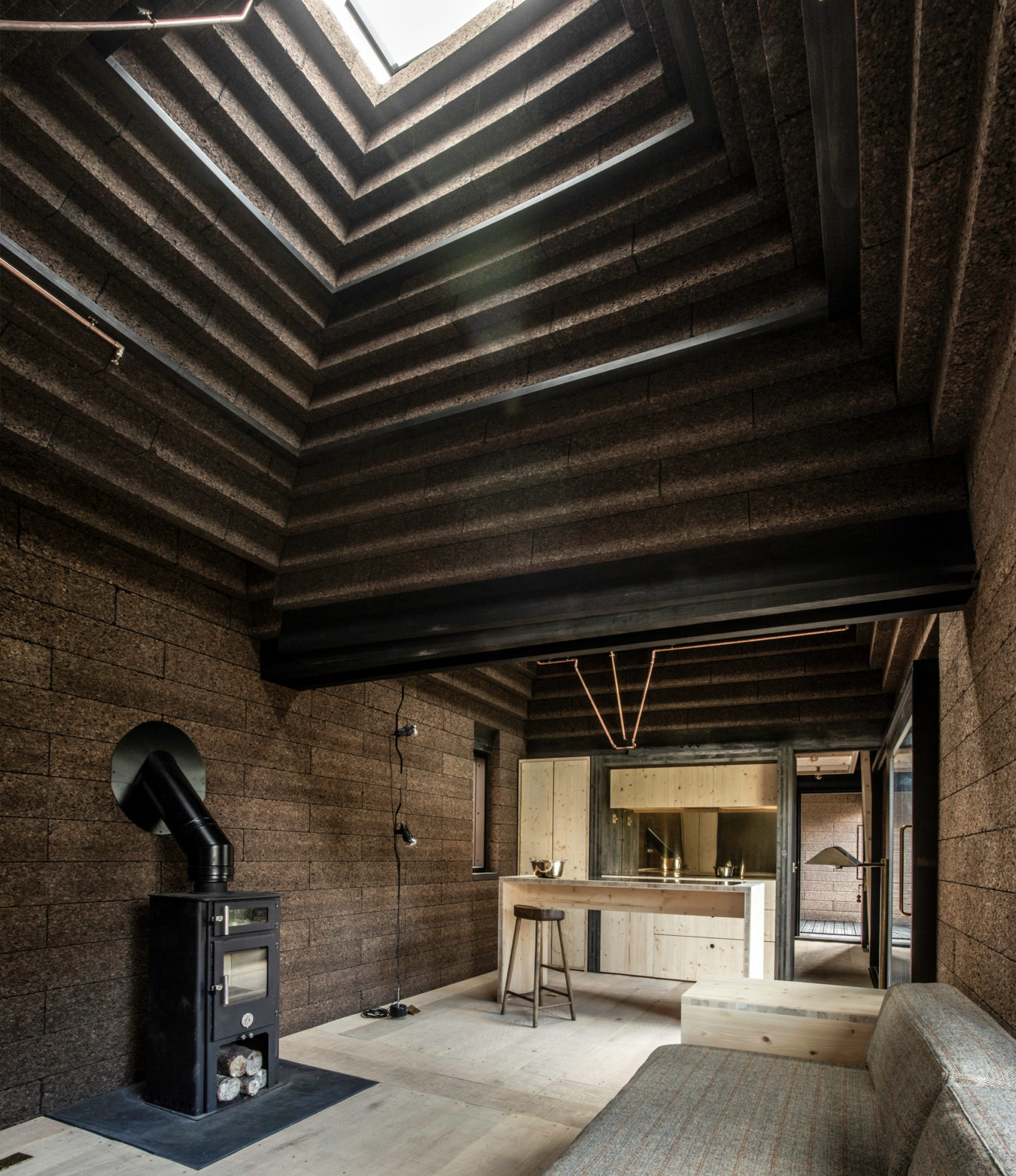If you read the word “cork” in the title of this post and the first image that came to mind was a wine bottle, then you might have a bit of a problem.
There are more uses for cork than keeping your favourite alcoholic beverage fresh, and Cork House is a beautiful demonstration of its versatility. It is the first building to use cork from bottom to top. I’ve seen a few homes that have used it as flooring, for finishing walls, and even as cabinetry.
Matthew Barnett Howland designed this home with Dido Milne and Oliver Wilton. I imagine that they felt a lot like I did building my lego creations when they were working on their design. I vividly remember wanting to create cool designs with my legos and then realizing the limitations of lego skills since my math skills weren’t excellent, but also the fun in the struggle to create something unique. There was a lot of sighing, giggling at the weird-looking things I made and the occasional smashing of my small creations. By no means am I comparing my lego “materpieces” to what they were able to develop because it’s a thing of much more exceptional beauty, mathematical skills, purpose, and dedication.
The environment and our effect on it are non-stop topics conversation. While some of us have been busy hyping up Greta Thunberg, or trying to knock her message down a few pegs, going vagan or creating mems about high the high maintenance gluten-free-vegan girl, this team was busy actually doing something about it.
Even though this home is located in On The Thames River, England, from an arial view it unintentionally canjuers up images of the past.
Cork House is an innovative gem, located in Berkshire, England, and was created in response to the architecture industry’s impact on biodiversity, greenhouse gas emissions, and reliance on single-use materials. It’s hard to place this building’s design on a historical timeline. It has five pyramid-like skylights which remind me of the Egyptian or Aztec pyramids but also has a modern open-plan kitchen and a secret little attic bedroom hideaway like a tiny house
It absorbed more carbon dioxide than it emitted during the entire construction process making it carbon-negative.
Here are some interesting facts that will help you sound smarter when chatting about Cork Hose with snooty people:
- Exactly blocks 1,268 were used to build it.
- It was designed so that in the future, it can be easily dismantled, reused or recycled.
- It’s cork shingles and siding are water-resistant, so there was no need to cover up its exterior.
- There’s no need to worry about it burning down either. Cork doesn’t burn – it just chars a bit.
- It was up for a few prestigious awards; the Stirling Prize 2019 – the UK’s most prestigious architecture award a Dezeen Award 2019 in the rural house category.
- No trees died in its making. The bark of the cork oak, which cork is made of, is harvested by hand every nine years without harming the tree or disturbing the forest.
If only cork weren’t so expensive, we’d all be building homes and renovating with it. You’d better start collecting those wine bottle corks; they may be just the thing you need in your next reno.









